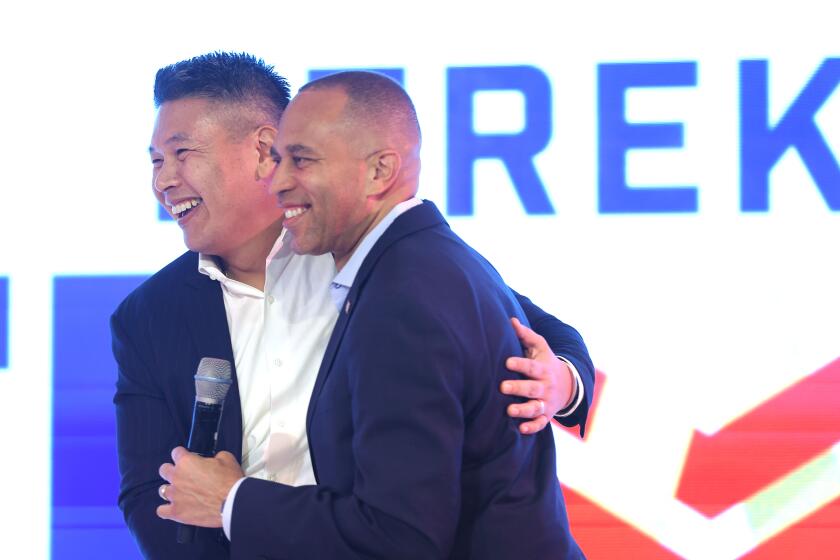This weekend, significant political activities unfolded in California as House Minority Leader Hakeem Jeffries mobilized Democratic support in the Antelope Valley and Orange County for congressional candidates George Whitesides and Derek Tran. This coincided with House Majority Leader Mike Johnson’s appearance in Riverside County alongside incumbent Rep. Ken Calvert, aimed at energizing Republican voters. These parallel efforts by top party leaders highlight California’s pivotal role in the upcoming Nov. 5 election, crucial for determining control of the House of Representatives. With just over three weeks until the election, both parties recognize the importance of mobilizing their bases in a state that could significantly impact congressional dynamics.
As the election approaches, Democrats are focused on reclaiming control of the House by targeting a net gain of four seats nationally. With Republicans holding a slim majority and defending numerous competitive districts—including 15 considered toss-ups—California emerges as a strategic battleground. Notably, five of these toss-up districts lie within the state, where Republican incumbents are facing tough re-election contests. Erin Covey, House editor for the Cook Political Report, emphasizes that California’s outcomes could be more critical than any other state’s in shaping the House majority for the next legislative session.
The stakes are raised by high-profile campaign events, such as former President Trump’s visit to a Coachella Valley polo field, which invigorated local Republicans who have often felt neglected by national GOP figures due to the Democratic tilt of the state. The competition is intense across several districts, including the 45th District in Orange County where Tran challenges incumbent Rep. Michelle Steel, and Riverside County’s 41st District where Will Rollins contests Calvert. Additionally, significant races are unfolding in the Antelope Valley’s 27th District and California’s Central Valley, where Democrats Adam Gray and Rudy Salas strive to unseat Republican incumbents.
The competitive landscape is further complicated in the newly open 47th District of coastal Orange County, where State Sen. Dave Min faces former GOP Chairman Scott Baugh. Without an incumbent—after Rep. Katie Porter’s unsuccessful Senate bid—the race is expected to be closely fought. Analysts describe this district as leaning Democratic, yet Baugh’s prior close loss to Porter in 2022 indicates a potentially contentious rematch. The combination of high stakes and intense competition has made California a focal point for national partisan strategies.
The shifting political landscape in California is attributed, in part, to Republicans exceeding expectations in the previous 2022 elections. According to Covey, Democratic candidates are likely to encounter challenges based on dissatisfaction among voters regarding the handling of critical issues by the state’s fully Democratic leadership. However, the landscape may shift in the forthcoming presidential election year, typically characterized by increased voter turnout that could favor Democratic hopefuls in the competitive districts.
Jeffries’ rally in the 45th District drew notable attention, particularly due to its predominantly Vietnamese American population in Little Saigon, historically unrepresented at the federal level. The event included cultural performances and served to underscore the significance of representation in shaping local electoral dynamics. As both parties stir enthusiasm among their supporters, the upcoming weeks will be critical in determining the political future of California and, consequently, the control of the House. The strategies deployed now will set the stage for a fierce political showdown come November, making every campaign event and voter interaction count in this essential battleground state.

